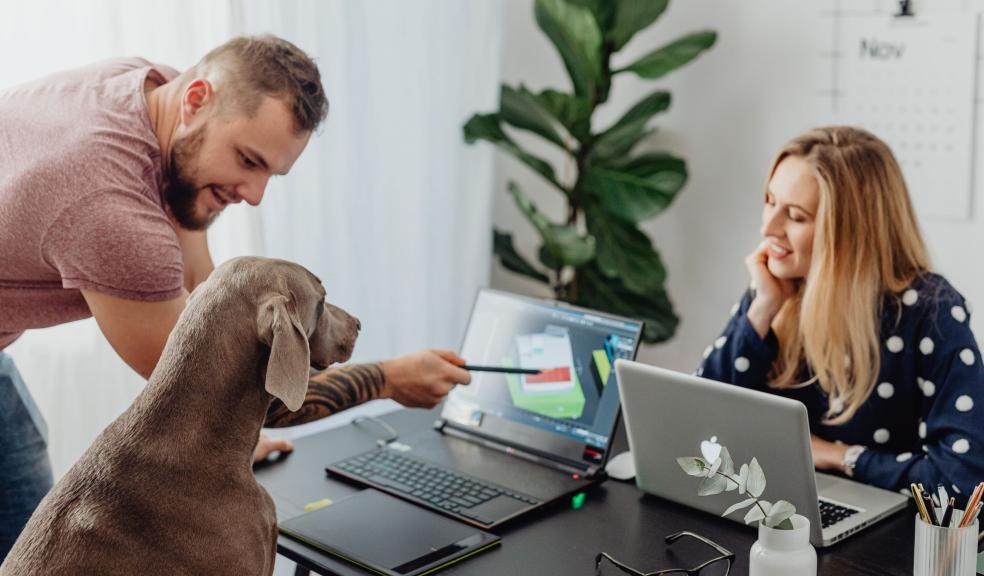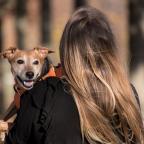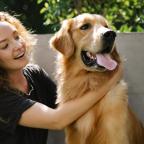
The best dog breeds for the office according to a vet
What are the most office-friendly dog breeds?
Is there anything better than having a furry companion to melt the stress away during your working day? Workplace solutions specialist, Adam Butler, CEO of Officeology spoke with Dr Linda Simon, Vet at Pooch and Mutt, to find out what breeds make the best office dogs and her top tips on how to introduce them to office life.
Adam said: "Over a quarter of the UK population owns a dog. That is a significant proportion of the workforce. Allowing dogs in the office can be a very enticing benefit that boosts employee retention and happiness!
"In fact, studies have shown that dogs offer social support and reduce stress and anxiety in the workplace. Other research goes as far as to suggest that office pets can help increase productivity."
But what dog breeds are the best to have in the office?
When it comes to an office-friendly dog, we want one that is "low energy and not too needy", Dr Linda explains, "depending on your work environment (and proximity to co-workers!), you may also want a small enough dog that doesn't shed or drool too much."
Top 5 Most Office-Friendly Dog Breeds
-
Cavalier King Charles Spaniel
Cavaliers are known for being affectionate and gentle, making them an ideal office companion. They're also one of the easier breeds to train, which can be very beneficial if your job keeps you on your feet. Bred as a lap dog, the Cavalier can get through the day quite happily by resting on the sofa or by your desk. Given you still exercise them on your lunch break.
-
Cavapoo/Poodle Cross
If you want a dog that thrives in company, consider a poodle cross like a Cavapoo. The Cavalier/Poodle mix inherits some of the best traits from both of its parents. They're a loyal and outgoing breed that loves nothing more than being around people. The Cavapoo rarely drools too and has a low tendency to bark, making them ideal for bringing into the office.
-
Shih Tzu
Shih Tzus have been kept as loving companions throughout the ages. They're a devoted breed and relatively low energy, making them a good choice of pet for people who are not overly active or sit at a desk Monday through Friday. Shih Tzus are also very intelligent and appreciate learning new things.
-
Greyhound
If you want a slightly bigger dog with all of the love and affection of a smaller breed, then consider a Greyhound. Their loving nature and enjoyment of company make them an all-round great companion. Whilst their low maintenance grooming schedule keeps things relatively fur-free in the office. Ensure that you make the time to take long walks, either before or after work, if you choose to adopt a Greyhound, as they appreciate off-lead runs of an hour.
-
Cavachon
A cross between a Bichon Frise and Cavalier King Charles Spaniel, the Cavachon is an easy-going, low exercise dog, only requiring around a 30-minute walk a day. They also don't shed much, with some people with dog allergies even finding that they can tolerate their presence more than other breeds. A huge plus if your coworkers have allergies.
Dr Linda Simon from Pooch and Mutt Q&A:
1. At what age is it best to bring a dog into the office?
Get your dog used to the office environment from puppyhood, ideally during their socialisation period. This means we are aiming to have them in before 16 weeks of age. At this time, dogs are learning what is 'normal', and it is important we introduce them to the office so they view it as somewhere calm and familiar.
If your office is carpeted and you are toilet training, this may be tricky. Bring along puppy pads, and you'll have to let your dog out regularly. Reward your dog when they are being calm and quiet by offering treats and praise, so they know what is expected of them when at work.
2. What tips would you give to someone bringing a lockdown puppy or dog to the office for the first time?
If your dog has not been exposed to the office and/or has been poorly socialised, you may have your work cut out for you. It's sensible to bring them in when you are not working for several visits, so they can get used to the office while having your full attention. Keep visits short and sweet and try to make them a pleasant experience. This may mean having co-workers offer treats and bringing your dog's favourite toy along. Build up the length of visits gradually.
3. What toys, activities and training do you recommend for office dogs?
We want office dogs to know how to relax. Teaching a 'settle' command early on is imperative. Your dog should have a bed or blanket they always have with them where they know to 'settle' when you give the command.
To train your dog to use it, have them beside you and the bed on a short lead. Whenever they sit or lay on it, quietly drop treats. Over time, gradually reward
more relaxed behaviours -perhaps when they lie fully down or stretch out. Increase the time they need to stay on it before rewarding and build this up over several sessions.
4. What measures should be taken to ensure an office is dog-friendly?
Offices can be hazardous places for pets, so always perform a risk assessment before bringing your dog in. Ensure co-workers are not leaving food or drinks unattended on the floor. Toxic plants, such as sago palms and daffodils, must not be kept in the same room as the dog.
Beware of munching on wires or chewing through furniture. If your dog is a chewer, you'll need to have eyes on them 24/7 at first. It can be worth crating mischievous dogs, at least in their younger years.







